Mediterranean countries are an inspiration to the world in their culinary traditions, as well as in garden design. Those two cultural threads mesh quite seamlessly, too, as there is a tradition in that part of the world of cooking with ingredients harvested fresh from the backyard — and of enjoying the meal outdoors, where the flavors on the plate blend with the aromas of the garden.
It’s possible to design a beautiful and productive Mediterranean garden in other regions by choosing the right plants, hardscape materials and accessories, and combining them all in the spirit of a casual but well-crafted meal.
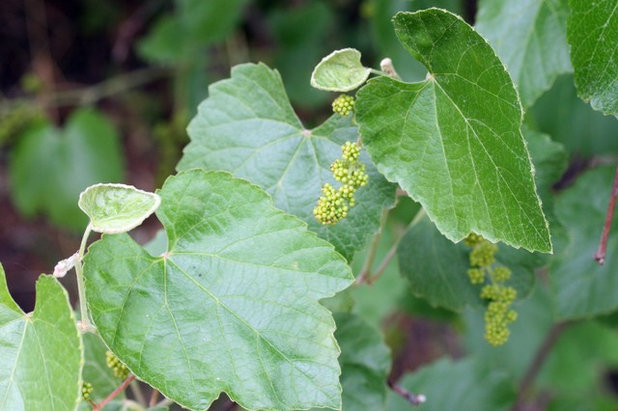
David A. Hofmann
The Mediterranean climate is characterized by hot, bone-dry summers and cool, rainy winters. In the U.S., those climatic characteristics are found primarily in California, but that doesn’t mean the ideas and aesthetics of Mediterranean garden design — and the edibles that often play a starring role in it — can’t be applied elsewhere. In some instances it’s a matter of utilizing a hot, dry microclimate that already exists in the garden, or creating one as part of the design.
1. Collect the right palette of plant materials. Grapes (
Vitis spp) are one sure way to set the tone for the space, whether over an entry arbor, covering a pergola over a patio dining area or planted en masse as a mini vineyard across a terraced hillside.
How to Start a Home Vineyard | See how to grow California wild grapes
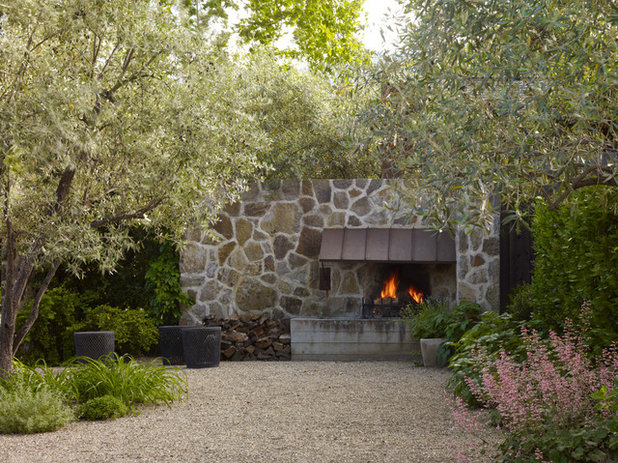
ROCHE+ROCHE Landscape Architecture
With their gray-green leaves and gnarled form, olive trees (
Olea spp) are another edible icon of Mediterranean gardens. Their leaf color is a hint about what works in a Mediterranean garden, both aesthetically and functionally: Gray leaves are one of nature’s signals that a plant is drought tolerant, and muted colors like olive green are part of what makes the design style work.
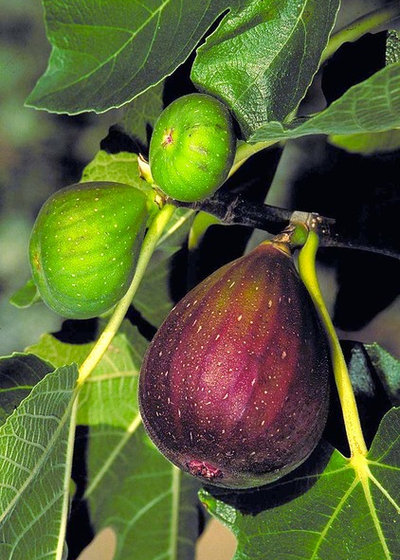
Monrovia
The fig (
Ficus carica) is a third icon of the edible Mediterranean garden. Though fig trees thrive in hot, dry places like Italy and California, it’s possible to grow them in a wide range of climatic zones. The variety pictured here, called ‘Brown Turkey’, is one of the best choices in the more humid eastern half of the country.
Other classic Mediterranean edibles to consider:
- Citrus (Citrus spp): Potted tangerines and lemons are two of the easiest varieties for an orangery.
- Artichokes (Cynara cardunculus var. scolymus): With their bizarre gray-green foliage, artichokes have the right look and the right culinary connection for a Mediterranean garden.
- Caper plant (Capparis spinosa): This low-growing woody shrub is a lesser known edible, but it certainly has the right look and culinary connection.
Even if you grow just a few Mediterranean herbs — like rosemary, thyme and oregano — mixed in with ornamental plants, just the smell may transport you, as if in a dream, to the hills of Tuscany.
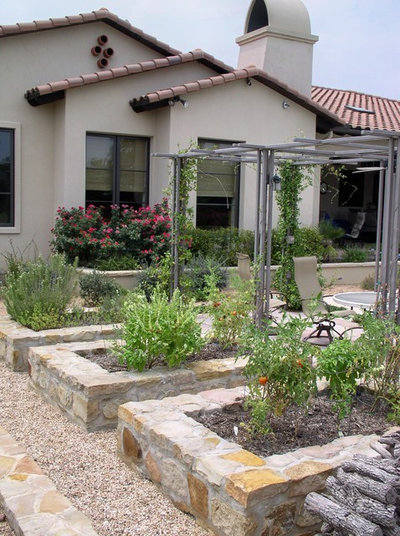
Rick O'Donnell Architect
2. Think about hardscaping materials. There are many edible species that exude a Mediterranean vibe, but almost any fruit, herb or vegetable can fit the picture if it is surrounded by the right frame. Earth-toned crushed-rock or flagstone paths and light-colored natural stone borders and walls are two key elements that bring a Mediterranean feel to any planting.
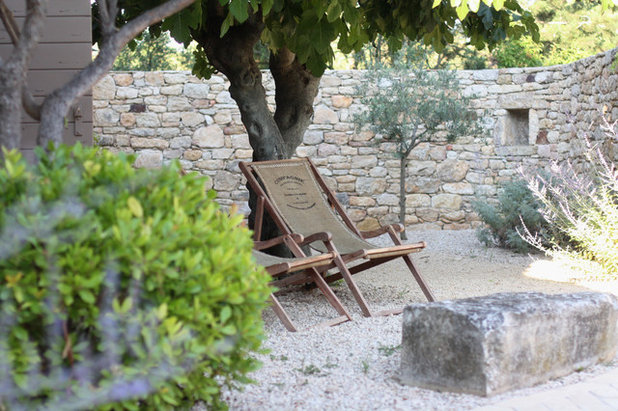
Holly Marder
A walled garden is one way to generate the heat needed for Mediterranean food plants, as well as to create a warmer winter microclimate. In cooler temperate climates, train Mediterranean plants like figs, grapes and olives against a south-facing wall so they will ripen to perfection.
While grapes are very cold hardy, figs and olives will get damaged below 15 degrees Fahrenheit; olive and fig trees tolerate heavy pruning, however, and are available in dwarf varieties, so they can be grown in a large planter and brought indoors in winter.
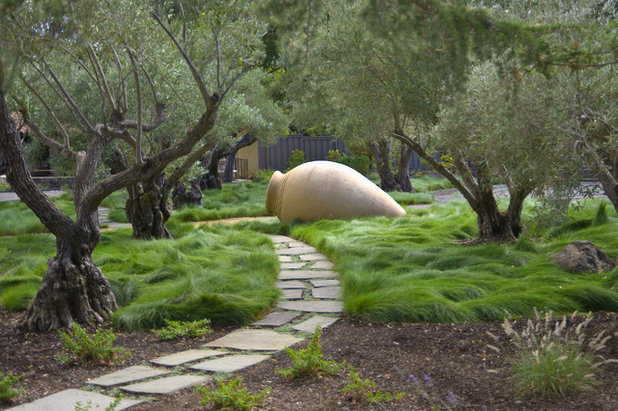
Kikuchi + Kankel Design Group
3. Introduce accessories. In addition to hardscaping materials, a bit of decorative pottery goes a long way toward setting the tone, as it does here in a big way in this grassy olive orchard. Note that these olive trees have been coppiced (cut back) annually, making them seem much larger than they are and accentuating the size of the urn.
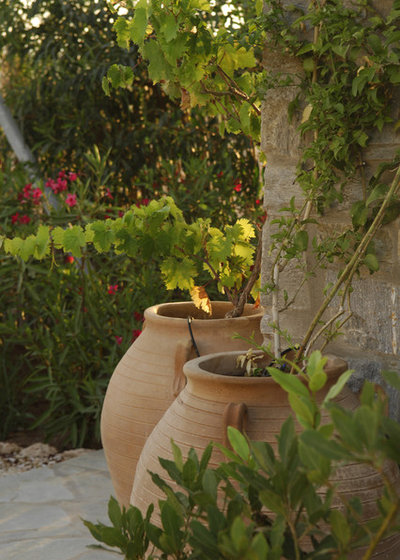
Carolyn Chadwick
Old ceramic urns are very decorative when laid on their side, though they can also function as pots. An urn this size is sufficient to hold a grapevine, but it’s possible to do a mini Mediterranean patio garden entirely in containers — jug-size ones for herbs and veggies, and larger ones for berries and vines.
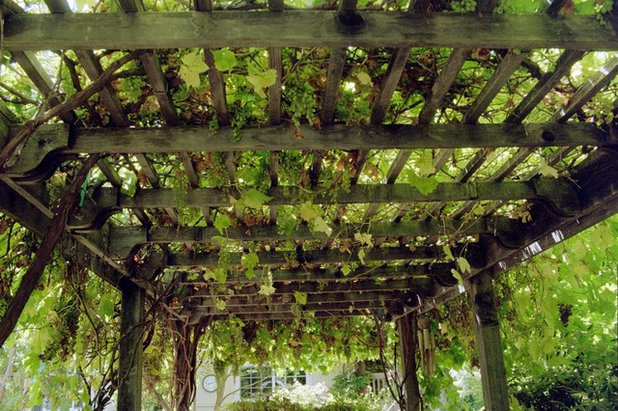
Diane Licht Landscape Architect
Mediterranean climates are generally hot, so a shade structure of some sort is usually part of the garden decor. Rather than planting wisteria or bougainvillea over a pergola to provide summer shade, use a grapevine or a hops (
Humulus lupulus) vine. And, if possible, use old, weathered wood for any overhead structures to keep the spirit of the Old World alive.
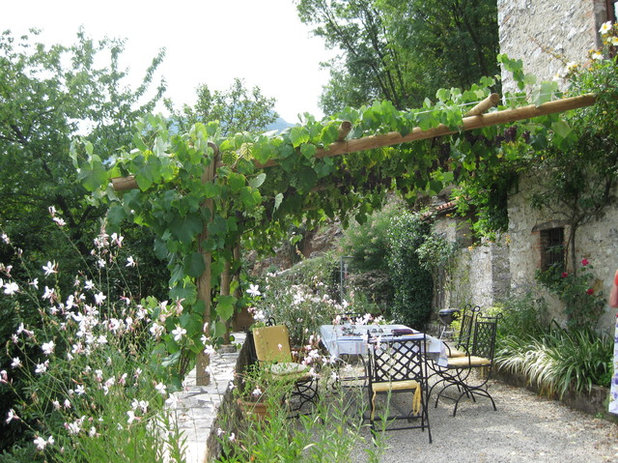
Garden Pacific
Finally, an outdoor dining table is a necessity for making the connection between garden and table.
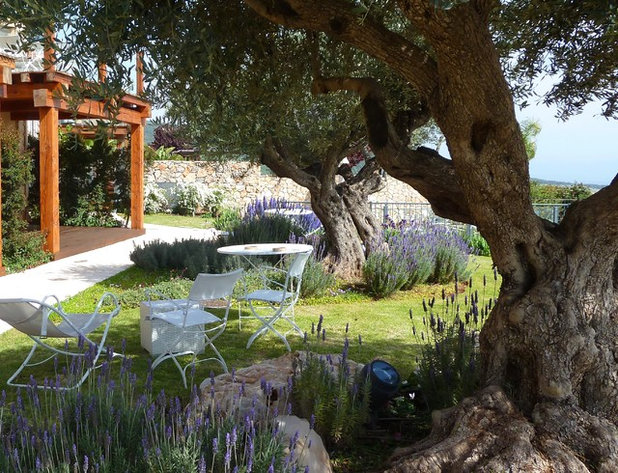
GARDENIA-Sharly & Tanya Illuz
Let the spirit of a cozy, casual and rejuvenating dining experience guide you when you‘re planning the composition of your garden, allowing the lines of beds, paths and other features to drift loosely through the landscape to avoid any sense of formality. Instead, create a sense of order by layering different elements over one another — a grape pergola over a picnic table, a fig tree over a simple patio water feature or an olive tree over a planting of lavender, as pictured here.
More:Browse more guides to gardening with edibles
See more inspiring garden styles





